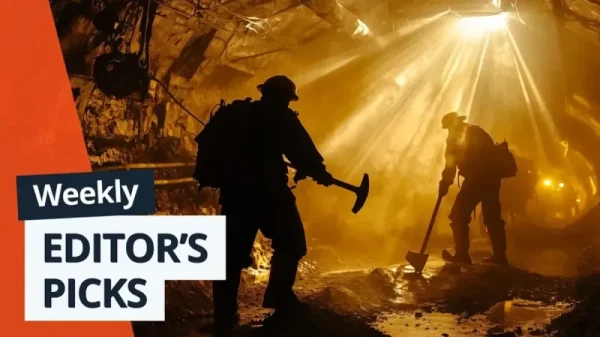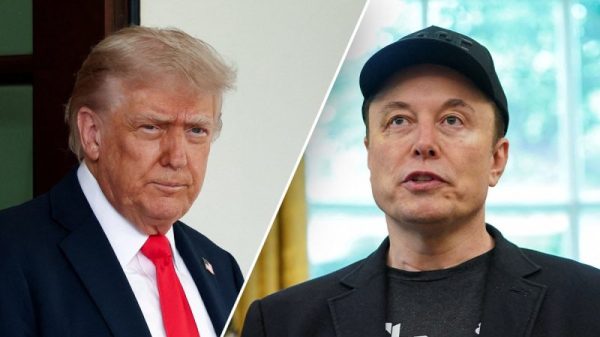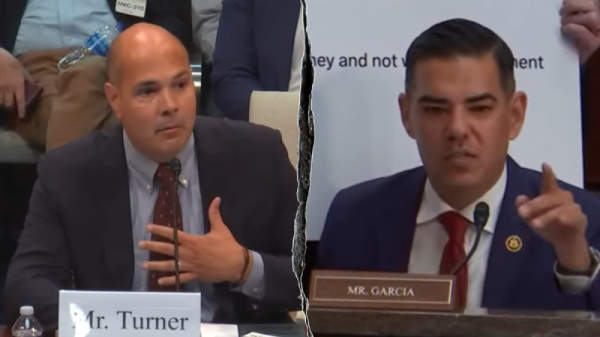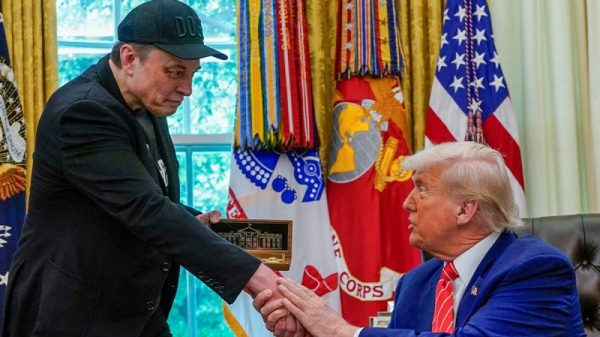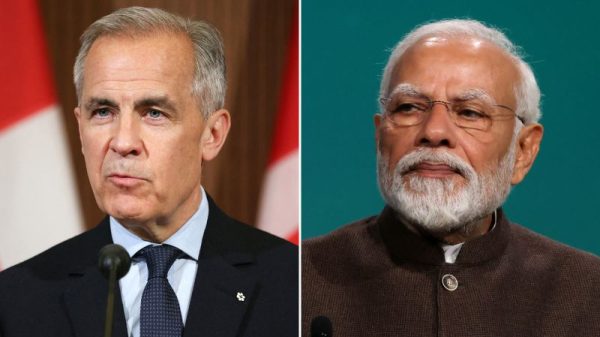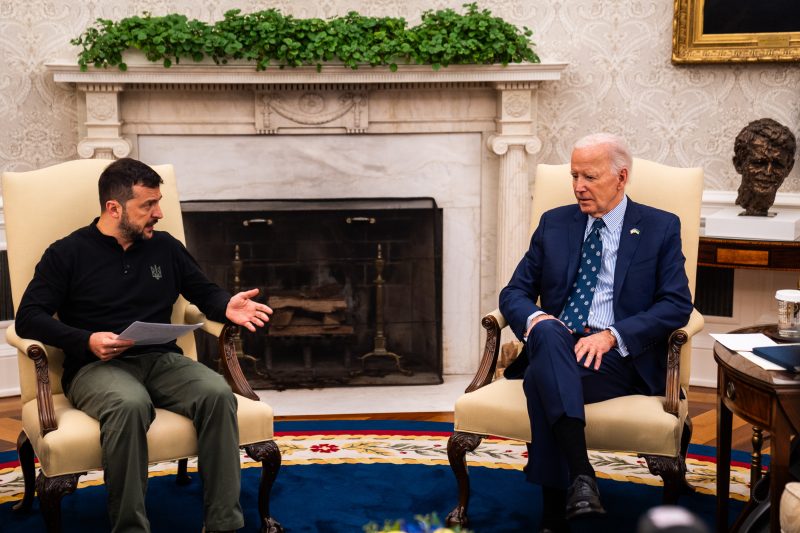Ukrainian President Volodymyr Zelensky, appealing urgently to President Joe Biden on Thursday to let the country extend its use of American weapons, waded into a heightened partisan divide over the Russia-Ukraine war, with the U.S. presidential election weeks away.
Biden met with Zelensky at the White House on Thursday, but he did not grant Kyiv’s request for permission to fire American-made missiles deeper into Russia. Instead, he announced the delivery of more military aid and new air defense capabilities, as the White House sought to show strong support for Ukraine while rejecting the country’s primary plea.
Former president Donald Trump, meanwhile, announced that he would meet with Zelensky on Friday morning, apparently a last-minute addition to the Ukrainian leader’s schedule following growing tensions between Zelensky and Republican leaders.
Zelensky’s trip to the United States comes at an intense, potentially pivotal moment in both the Ukraine war and the American election. The Ukrainian president at times struggled to navigate the turbulence of the U.S. political landscape at a moment when some Republicans are increasingly hostile to his country’s war effort and more sympathetic to Russian President Vladimir Putin.
Zelensky’s recent stop at a Pennsylvania factory that makes shells for Ukraine’s war effort, for example, prompted an angry reaction from Trump, who accused him of electoral interference for visiting an American swing state. Zelensky also provoked Republicans’ anger by telling the New Yorker that Sen. JD Vance (R-Ohio), Trump’s running mate and a staunch opponent of Ukraine aid, is “too radical.”
His separate meetings Thursday with Biden and Vice President Kamala Harris marked a frantic effort to persuade the White House to grant permission for the long-range strikes. Some military analysts say Russia is poised for significant gains if Ukraine cannot manage to reverse the time in the coming weeks.
Russia’s 2½-year-old invasion has killed or injured roughly 1 million people on both sides, and it is one of the largest conflicts in Europe since World War II.
Biden has been reluctant to grant Ukraine authority for the long-range strikes, despite some top aides and European allies urging him to do so, fearing it could escalate the risk of a direct confrontation between Russia and the West. On Wednesday, Putin issued a nuclear threat against the West, saying that any nation’s conventional attack on Russia that was supported by a nuclear power would be perceived as a joint attack.
Ahead of his meeting with Zelensky on Thursday, Biden pledged to help Ukraine defeat Russia and thanked the Ukrainian leader for sharing his “victory plan.”
“We stand with Ukraine now and in the future,” Biden said. “Let me be clear. Russia will not prevail in war.”
Before her own sit-down with Zelensky, Harris hinted at the partisan dispute that has been evident during his visit, criticizing those pushing Ukraine to give up its territory and make other concessions.
“These proposals are the same of those of Putin,” Harris said. “And let us be clear — they are not proposals for peace. Instead, they are proposals for surrender, which is dangerous and unacceptable.”
The military aid that Biden pledged to Ukraine on Thursday comes at a gloomy moment for Kyiv’s battlefield situation, with Russia making gains in eastern Ukrainian territories and coming closer to retaking the Russian territory that Kyiv seized last month.
Biden offered significant new air defense capabilities, including an additional Patriot antiaircraft battery to help Ukraine defend its cities and energy infrastructure. The president also promised to train 18 more Ukrainian F-16 pilots next year and announced additional drones and air-to-ground munitions. He offered a new air-fired long-range glide bomb, called the Joint Standoff Weapon, that should help Ukraine more successfully strike Russian targets.
In all, the new assistance will use up the remaining $7.8 billion allocated to Ukraine this year under the $60 billion supplemental bill that Congress passed in April. Those funds must be spent by the end of the fiscal year on Sept. 30.
The new shipment of aid comes in lieu of green-lighting Zelensky’s central request during his visit: the ability to use the U.S. long-range missile systems known as ATACMS to strike deeply into Russia. Ukrainians say those missiles, with a range of 180 miles, would help destroy Russian supply lines and ease bombardments on their country by pushing the Kremlin’s forces away from the border. The decision has divided Biden’s administration and lawmakers on Capitol Hill.
The political furor surrounding Zelensky’s visit reflects a complex three-way dance between Democrats, who want to help Ukraine make military progress before a potential Trump presidency; Republicans, who are divided over — and increasingly opposed to — supporting Ukraine; and Zelensky, who has made it clear he fears time is running out for his country’s war effort.
Following a meeting at the Capitol between Zelensky and a group of senators, Sen. Lindsey Graham (R-S.C.) said Biden should grant Zelensky’s request for long-range strike authority, saying it would give Ukraine leverage in the effort to press Putin to negotiate a settlement to end the war.
“If you continue the policy of holding Ukraine back because you’re worried about escalation, you will doom them to lose,” Graham said.
That perspective was at odds with many of Graham’s fellow Republicans, who want Biden to provide less, not more, support to Ukraine.
At a campaign rally in North Carolina on Wednesday, Trump suggested Zelensky is aligned with Democrats, saying the Ukrainian president “refuses to make a deal” to end the war with Russia. “Every time he comes into the country he walks away with $60 billion. He’s probably the greatest salesman on Earth,” Trump said. “He wants them to win this election so badly.”
Biden, who has accused Trump of being too willing to embrace authoritarians such as Putin, has worked to maintain U.S. support for Ukraine despite growing Republican opposition to sending more money and weapons as the war has dragged on. He has been wary of authorizing the long-range strikes in part because of fears that Russia would retaliate by escalating elsewhere, for example by sending arms to the Houthi militia in Yemen or nuclear know-how to Iran.
When Russia invaded Ukraine in February 2022, members of both parties enthusiastically supported helping Kyiv. Republican and Democratic lawmakers feared that allowing Russia to invade its neighbor could pave the way for Putin to invade nearby NATO countries, including Poland, as well as encourage other aggressors such as China to seize territory in their own backyards.
But over time, Republican skepticism of U.S. military and economic support for Ukraine has grown significantly. It is now being stoked by Trump and Vance, both of whom have expressed sympathy with Putin and encouraged Ukraine to give up territory if that’s what it takes to end the war.
Even so, Biden and Zelensky have had a turbulent relationship over the course of the war. Ukrainian leaders say they appreciate Biden’s efforts to send them arms, but they also complain that the White House has been overly cautious and too restrictive in how it doles out the aid.
As Zelensky has asked for one weapon after another — tanks, F-16 fighter jets, long-range missile systems — the White House has first demurred, then eventually agreed. Ukrainian leaders are hoping a similar pattern plays out with Zelensky’s current request to use ATACMS for attacks well inside Russia.
Some Ukrainian officials say that if the U.S. had agreed to their requests more quickly, they would be in a far stronger position against Russia today. But Biden administration officials say that America’s considerations do not always align with Ukraine’s, and that avoiding the outbreak of World War III with a nuclear-armed Russia also must be a priority.
Biden, for his part, has at times complained directly to Zelensky that he is not showing sufficient appreciation for the sacrifices Americans are making to support Ukraine, or the political sacrifices Biden himself is making to maintain that support, particularly when gas and food prices rose because of supply-chain issues caused by the war.
With the presidential race so narrowly divided and both campaigns seeking to appeal to swing voters in battleground states, eastern European diaspora communities scattered across Pennsylvania, Michigan and Wisconsin have emerged as important voting blocs, further entangling the Ukraine war with American politics.
Harris, in her debate against Trump earlier this month, cited Pennsylvania’s roughly 700,000 Polish Americans in talking about the Russia-Ukraine war. Ukrainian Americans also make up a large bloc of voters in the battleground states. Americans with ethnic ties to the Baltic nations of Lithuania, Latvia and Estonia — three of the countries most alarmed by Russian aggression — number in the thousands in Wisconsin and Michigan.
Voters with East European roots have traditionally leaned Republican, dating to the Cold War era when the GOP was seen as tougher than Democrats on Communism. But with Trump praising Putin and leading his party in a NATO-skeptical direction, Democrats see opportunities to make inroads.
That helped explain why Zelensky’s trip Monday to Scranton, Pa., was so sensitive, especially since he appeared alongside Pennsylvania’s Democratic governor, Josh Shapiro, a highly visible Harris supporter. Some European leaders privately questioned Zelensky’s judgment on Thursday, wondering why he had allowed himself to appear in a politically sensitive setting.
Trump’s tumultuous relationship with Zelensky dates back to his previous presidential term, when he seemingly linked the provision of U.S. military aid to Zelensky’s willingness to investigate Biden’s son. That issue eventually led to Trump’s first impeachment and his lasting anger toward Ukraine’s leaders.
This year, Ukrainian leaders have tried to build ties to the Trump camp as the former president has emerged as the Republican nominee. There were times this spring when at least some of Zelensky’s aides believed that Trump might have a better chance than Biden of helping them drive a tough bargain with Putin.
Zelensky’s visit this week illustrates how much the dynamic has changed, as several prominent Republicans publicly criticized the Ukrainian president.
Rep. James Comer (R-Ky.) announced he was opening an investigation into Zelensky’s trip to Pennsylvania, particularly the Biden administration flying him there on a military plane. House Speaker Mike Johnson (R-La.) urged Zelensky to fire his ambassador to the U.S. for arranging the trip.
Johnson also said he would not meet with Zelensky this week because of a scheduling conflict, even as Senate Minority Leader Mitch McConnell (R-Ky.) signaled his strong support of Zelensky and Ukraine.
Liz Goodwin contributed reporting.


